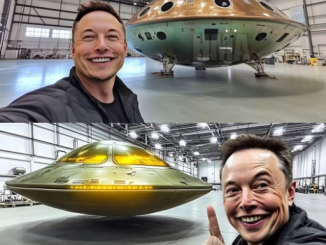
In yet another leap toward interplanetary living, Elon Musk’s SpaceX has launched its most ambitious project to date — a self-sustaining space habitat designed to house humans for extended periods. This cutting-edge prototype, unveiled in 2024, marks a critical milestone in Musk’s long-term vision: establishing a permanent human presence on Mars.
More than just a technological showcase, the space habitat represents a giant step toward solving one of humanity’s most complex challenges — how to survive and thrive beyond Earth.
🌍 A Home Away From Earth
The space habitat, known internally as Haven-1, is an advanced orbital station capable of supporting life in space for months — or even years — at a time. Unlike traditional space stations, Haven-1 has been engineered with self-sufficiency at its core. This includes closed-loop life support systems, renewable energy generation, and onboard food production technologies.
According to Musk, “If we’re serious about becoming a multiplanetary species, we must master the art of living in space — not just surviving, but living well.”
With the successful 2024 launch of Haven-1, SpaceX has proven that long-duration space habitation is no longer a distant dream, but a technological reality in motion.
🛰️ Designed for Mars, Tested in Orbit
Haven-1 is more than a space home — it’s a testbed for Mars. The station is being used to simulate conditions astronauts would face on the Red Planet, including isolation, radiation exposure, limited resources, and confined living quarters.
Key components of the station include:
- Artificial Gravity Modules to study the effects of variable gravity on human health
- Hydroponic Gardens for food production and oxygen replenishment
- Radiation Shielding to test new protection materials for deep-space travel
- Autonomous Maintenance Bots to reduce crew dependency on Earth-based support
The data gathered from the habitat will inform the design of future Mars colonies, providing crucial insights into sustainability, habitability, and long-term crew wellness.
🧑🚀 Life Inside the Habitat
The interior of Haven-1 is unlike any spacecraft before it. Designed with both utility and comfort in mind, the station includes private crew quarters, a communal space for recreation, and even a panoramic observation dome for Earth and star-gazing — a psychological boost for those spending months away from home.
Initial missions will be crewed by a rotating team of astronauts and scientists who will conduct research in medicine, agriculture, and space engineering. As Musk puts it, “The goal isn’t just to survive in space — it’s to build a new civilization.”
With artificial intelligence supporting habitat operations and safety, the environment offers a glimpse into the future of smart space living.
🌌 Building the Foundation for a Martian Future
Musk’s Mars ambitions have long been a part of SpaceX’s DNA. But with the deployment of Haven-1, those plans now feel more imminent than ever. The station provides the perfect environment to simulate Martian missions, train crews, and stress-test the technology required for the next giant leap.
Following the success of Haven-1, SpaceX has already announced plans for Haven-2 and Haven-3, which will be larger, more autonomous, and potentially accessible to civilian researchers and private explorers.
The ultimate vision? A network of space habitats orbiting Earth and Mars, acting as launch points, rest stops, and research hubs for the interplanetary future Musk envisions.
🌠 The Next Frontier Is Within Reach
As Earth faces growing environmental and geopolitical challenges, Musk’s efforts to expand human presence beyond our home planet resonate more deeply than ever. The development of long-term space habitats isn’t just about space travel — it’s about human resilience, adaptability, and survival.
With Haven-1 now orbiting the Earth, Elon Musk and SpaceX have once again proven that what once seemed like science fiction is fast becoming science fact.
In a statement after the launch, Musk said, “Humanity was not meant to live on one world forever. We’re building the first stepping stones to the stars.”
And with the success of Haven-1, that journey has truly begun.


